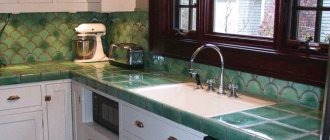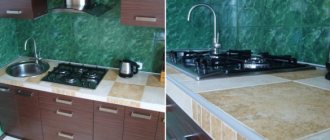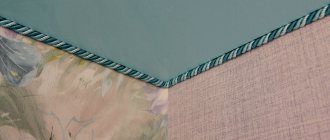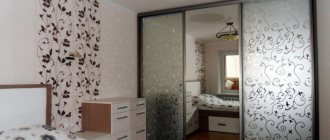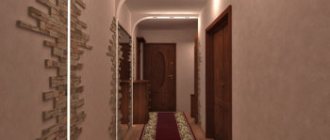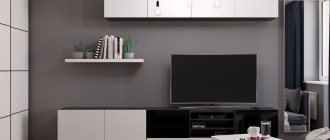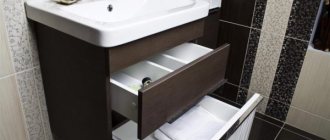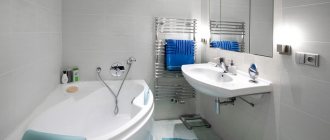Leaving steps unprotected is unwise. Under the influence of external factors, they may not last long. How to protect the steps? Porcelain tiles are the best option for this purpose. The technology for laying tiles is not the easiest. You need to choose the right porcelain tile to simplify the task. There are special products on sale that are suitable for cladding steps.
Features of step cladding
The main task is to make steps from porcelain stoneware for stairs. This is not only beautiful, but will also protect the structure. Why is it so difficult to cladding steps, decks and porches? It all comes down to the operating features of these elements. If you do not have the skills to work with this material and lay it out incorrectly, it may crack or fall off. The steps themselves are a dangerous place. Therefore, finishing them is a serious matter.
The integrity and stability of the future coating also depends on other factors, such as:
- constant rains;
- snow;
- dust;
- heat;
- frosts.
And since the structure is located in the yard, it will constantly be subject to such negative influence. That’s why when cladding a structure outdoors, you need to follow these tips:
- The base of the porch and the steps themselves are made of concrete. It would be better if it was reinforced concrete. It is unacceptable for cracks, shrinkage, or backlash to form.
- The reinforced concrete structure must be perfectly protected from moisture. This includes not only waterproofing areas that are exposed to the soil, but also expanding the roof overhangs. This way moisture will not get directly onto the stairs.
- You should not skimp on materials when working. Primer, grout, porcelain tiles and glue for it - all this is purchased of proper quality.
- The safety of homeowners and those who come to visit should also be kept in mind. This means that the structure is equipped with anti-slip pads. Another option is to use porcelain stoneware with special anti-slip notches and a rough surface.
The cladding can be made of different materials. These are clinker and concrete tiles, natural stone and porcelain stoneware. Each of the materials has its own characteristics.
Porcelain tiles are a type of ceramic tile. Despite its name, it has nothing in common with granite. The material is made from different types of clay, quartz and feldspar. The difference between porcelain stoneware and ordinary ceramic tiles is the density of the structure. This means that the material is more durable, better resists moisture, and is not afraid of mechanical damage.
Types of tiles
Designing a staircase requires an original approach, especially when it comes to a concrete structure. Today, there are several types of tile materials on the market, each of which differs in the raw materials used and production technology.
Stone
Natural stone is highly valued due to its durability and wear resistance. The beauty of the material is almost timeless, making it a worthwhile investment for many years to come. Tiles of this type do not have high sound insulation, so they are not recommended for use in small private houses or apartments. Granite, sandstone, basalt or marble are best suited for cladding steps.
Related article: How to make a staircase to the basement: the main stages of manufacturing using three examples
Stairs with stone steps are resistant to mechanical loads, characterized by high moisture resistance, fire resistance and resistance to temperature changes. Stone structures look majestic and elegant, eloquently speaking about the status of the owners. The main disadvantage of the facing material is its too high price, so recently the use of an artificial analogue has become increasingly popular.
It is recommended to cover the surface with anti-slip elements to prevent accidental falls.
Ceramic
The tiles are used for laying indoors or for lining the steps of street stairs. It is considered a classic and universal option for steps and risers, suitable for any type of interior. The basis of ceramics is clay, quartz or kaolin, which through pressing and firing acquire high strength and reliability characteristics.
Due to this treatment, tiles have many advantages, in particular they note:
- moisture resistance;
- resistance to temperature changes;
- long service life of ceramic structures;
- color preservation during operation;
- neutrality to chemical influences;
- wear resistance.
Ceramic steps with a cornice in a private house can be not only solid, but also prefabricated. This allows you, if necessary, to replace a damaged or annoying element, while updating the interior. This type of tile is safe, aesthetic and practical.
The range of tiles is quite large, so everyone can choose an option that perfectly suits the style of the overall decoration.
Clinker
Due to its wide range of uses, clinker tiles are the optimal facing material. It has the form of durable plates with a smooth or embossed surface, with different textures and shades; it can simulate brick, stone and other materials.
Several types of clay, fluxes and dyes are used in the production of clinker. The material is produced using two methods - pressing and extrusion. When pressing, a tile is formed from the prepared mass, which then undergoes a firing process at high temperature. In this way, products with a smooth surface are obtained.
Extrusion involves placing raw materials in a special mold, then drying and firing in the same mold. Using this technology, it is possible to obtain a product with an uneven texture, which ensures strong adhesion to the base surface.
The use of clinker tiles for finishing indoor or outdoor steps has many positive aspects, due to the fact that the material has the following characteristics:
- strength;
- long service life;
- resistance to chemical influences;
- impact resistance;
- environmental Safety;
- aesthetic appearance.
Related article: Types and features of modular stairs [options for assembling the system with your own hands]
The selection is made based on the appearance and cost of the tiles. There are both budget and luxury options on the market.
On the video: types and features of clinker tiles for steps.
Porcelain tiles
Refers to modern finishing materials with unique properties and excellent appearance. Porcelain stoneware is widely used in the finishing of floor and wall coverings in hallways, kitchens, bathrooms; it is used to cover stairs in various types of premises or on the streets.
Porcelain tiles have a unique composition and manufacturing method. The production uses illite and kaolin clay, feldspar, sifted quartz sand, minerals and natural coloring pigments. All components are mixed in the required proportions, after which the mixture is poured into molds and compressed under high pressure.
At the second stage, the material is placed in special furnaces, in which firing is carried out at a temperature of about 1250°C. Due to high pressure and temperature, porcelain stoneware elements are glazed and become homogeneous, essentially turning into a monolith.
Porcelain tiles have many advantages, including:
- High hardness. The glassy monolithic structure perfectly holds a load of up to 450 kg and does not crack from impacts.
- Minimum level of moisture absorption. Baking the tiles ensures a high density of the material, while the absorption coefficient is no more than 0.05%. Thanks to this, cladding is possible in the bathroom or swimming pool.
- Abrasion resistance. The durability indicator depends on the type of tile.
- Fire resistance. The non-combustibility of the material makes it possible to use it in places and premises of any type.
- Frost resistance, resistance to temperature changes. This is especially important for street stairs.
- Resistance to chemicals and reagents. The material is not exposed to alkalis, acids, or household products.
- Environmental Safety. In the production of porcelain stoneware, only natural ingredients are used.
Manufacturers offer porcelain tiles with matte, glossy, polished, embossed, and aged surfaces. Each type is characterized by a unique appearance and surface structure. The option is determined based on the general style of the room and the financial capabilities of the person.
Choosing porcelain tiles for work
Consumers have two options for laying porcelain tiles on the stairs. There are ready-made monolithic steps or regular porcelain stoneware tiles on sale. Features of choice:
- For standard staircase sizes (15 cm height, 30 cm width, from 120 to 160 cm length), ready-made monolithic steps are used. Their installation is one of the simplest. The elements have rounded ends and anti-slip notches.
- The length of such monolithic elements is 120, 130, 160, 180 cm, and the width is 30 cm. They can be purchased separately or as a set with risers. As for the end, it can be ordinary straight, figured or with a cornice. If the edge is straight, then you can purchase a plinth and cornice for the kit.
- A whole kit for cladding just one step will be expensive. To save money, you can buy only the monolithic step itself, and decorate the riser with porcelain tiles or mosaics.
- If the staircase is non-standard and curved or made fan-shaped, then porcelain tiles for stairs are used for cladding. The optimal thickness is 12 mm no less. In this case, it is convenient to use special tiles with sides or cornices. No additional profile needed.
- The use of an additional profile is required in cases where the tiles are ordinary and have a smooth edge. It can be removable or non-removable. The second one is installed during the installation process. But the removable one is fixed after tiling and grouting the stairs.
- When choosing the size of the tile, you need to draw a diagram of its placement on the surface. Ideally, choose a size so that the porcelain tiles do not need to be cut.
Advice! It is better to make porcelain stoneware steps from relief elements. Thanks to this, the surface will not be slippery.
Types and sizes of porcelain stoneware parts
The set consists of a sub-wall, tread and decorative plinth. In general, steps are prefabricated or monolithic. The length of a solid model is usually 1200-1300 mm, and as for thickness, it is in the range of 8-16 mm.
Speaking about the cost of a monolithic step made of porcelain stoneware, it will be higher than any option made of tiles. But at the same time, a detailed design will be more durable and a better option due to the fact that there will be no seams. As for prefabricated steps, it is most often customary to use solid or modular slabs, the sizes of which are 450x450, 300x300, and 300x600 mm.
Standard slabs
In this case, the installation can be seamless or decorative. As for standard slabs, treads have relief strips and cuts made of abrasive metal. In this case, the edge of the step can be simple or figured. If necessary, the shaped part can be made separately from the slab.
Steps with risers
A riser is always located under the tread; its height is usually no more than 150 mm. If you combine these elements with a horizontal slab, visually the staircase will look like a solid static structure with ideal edges.
Steps with plinth
In order to line the steps with porcelain stoneware and at the same time touch the side walls, a porcelain stoneware plinth is used, which can cover the joining seams. It is not at all necessary to use such an element, and such actions will entail additional costs. But here it is worth noting that it will help well in a situation where the junction of the step to the wall cannot be made perfectly even.
Preparing the surface for work
After the material has been selected, you need to prepare the surface of the steps. This process consists of several stages. First you need to make the surface perfectly flat. No horizontal deviations. If the steps are narrow, you cannot widen them with tile adhesive, this will make the structure heavier. In this case, wooden formwork is installed and the steps are filled with a mixture of expanded clay, crushed stone and sand.
Wooden stairs cannot be covered with porcelain stoneware tiles. The fact is that the structure is unstable and will sag. There are experts who recommend using elastic glue or adding it to a regular plasticizer. This will allow the adhesive mixture to move. However, this is not a solution, since the wooden structure will not withstand the load. This means that the tile will either crack or come off over time.
To improve the adhesion of the tile to the surface, the base is carefully primed with a deep penetration compound. In addition, it will fill all the pores, so the concrete surface will not absorb moisture so intensively.
Note! If the steps were made recently, then you can start processing them only when the concrete has completely hardened and become durable. This should take 2 months, no less.
Porcelain stoneware stairs in the interior
Porcelain stoneware is not just a durable, strong, reliable and practical material, it is also an excellent basis for realizing the most interesting design ideas. The variety of textures and colors, as well as the ability to imitate many other materials, make it an almost universal tool for creativity in the decoration of stairs. Magnificent, majestic, stylish and noble marble designs or cozy wood-look porcelain stoneware steps will decorate the entire home and be the pride of the owners.
Options for finishing end joints
The most difficult stage concerns finishing the edges and outer corners. As we have seen, there is a whole range of materials that make this much faster and easier. The appearance will depend on the choice. Since there are several product options, the methods for decorating the ends differ. Let's look at the most practical of them.
Installation of elements with a side (overhang). They are fixed to the edge of the steps. The edges are the same thickness as the tiles. Sequence of work:
- The tile is glued to the vertical side, which is called the riser. It fits flush with the edge.
- Tiles are laid on a horizontal surface.
- The edge of the porcelain tile and the edge of the tile on the riser should not touch.
- All that remains is to grout the joints between the vertical and horizontal parts of the elements.
It is not recommended to use this option in areas with heavy traffic. The fact is that the elements quickly wear out and collapse.
Another option is to install tiles with a safety edge. This will make it more difficult to slip. The edge of the tile is raised and is installed on the edge with a slight overhang. To improve the appearance, elements with rounded ends are used.
The next method is special corner elements. They make the installation process easier. The elements are bent at right angles. When installed, it slightly covers both a small part of the horizontal base and a little of the riser.
There are special corners or overlays on sale that are used to decorate the edges of steps. The elements are made of ceramics or metal. Metal pads are rubberized to ensure safe walking on the surface. Metal products are screwed to the steps using screws and dowels, and ceramic overlays are mounted with glue. All that remains is to choose one of the options and start installing porcelain stoneware steps for the stairs.
Video “We tile the steps of the stairs ourselves”
The recording shows the sequence of work when tiling the steps of a staircase.
The best posts
- Calculation of floor tiles for balconies and loggias
- Knitting a short women's jacket with a detachable collar from sectional yarn
- Decorating the hallway with decorative stone: simple, beautiful and modern
- How to join drywall in corners and the process of building a decorative niche
- Recommendations for finishing a corridor with MDF panels
- 50 DIY gift ideas for February 23 (35 photos)
- Rubber tile laying technology
- Easter cottage cheese cake according to grandma's recipe (video)
Related article: Do-it-yourself high-quality lining door
Step-by-step instructions for facing steps
First of all, prepare the appropriate tools and materials:
- trowel and metal spatula;
- rubber spatula;
- notched spatula;
- electric drill;
- glass cutter or tile cutter;
- roller and paint brush for priming;
- ruler, level and tape measure;
- plastic crosses for forming seams;
- rubber hammer;
- two-component adhesive for porcelain tiles.
If the porch is uneven, then it is leveled with a screed. To prevent moisture from accumulating on the surface, it is recommended to make a slope of 1.5 to 3 degrees. After this, you can begin laying tiles on the porch. Instructions:
- The concrete surface and protrusions are ground.
- The surface is cleaned of dust and debris. An ordinary broom will help with this.
- The concrete surface is primed using a roller. Hard-to-reach places are treated with a brush. Two layers of primer are enough, with a break for the previous layer to dry.
- Next, porcelain tiles are laid out on the surface of the stairs for fitting. The surface should be covered as much as possible with whole tiles. Work is done from the door. If you need to make a cut, then 20 to 30% of the tile size is allowed.
- Now you can install the tiles on the area near the doors. Tile adhesive is applied to the concrete surface using a notched trowel. Layer thickness – 10 mm no more. Porcelain tiles are placed in place. Crosses are installed between the tiles to create even seams.
- Now you can do the steps. It is important to focus on the center and place the tiles symmetrically.
- Glue is applied to the horizontal surface of the steps in the same way. You need a notched trowel. For tiles with a protrusion or corner, the adhesive is applied to the space between the base of the tile and the corner. The presence of voids is fraught with cracking of porcelain stoneware.
- First, the horizontal part is lined, after which the vertical part is installed. The correct installation is checked with a tape measure.
- When installing a riser, you need to understand that the edge of the riser tile and the edge of the element of the horizontal part must coincide. A seam is made between them. The photo shows how to implement this correctly.
- To get perfectly even seams, do not forget to install plastic crosses.
- Remains of glue are removed with a rag. The seams are cleaned before the adhesive has completely set.
When all the elements are installed, you just have to wait for the glue to dry. This takes one day. After which you can grout the joints. For work, a frost-resistant fugue for external work is used. The mixture is applied with a rubber spatula, the residue is removed with a damp sponge. The porcelain stoneware staircase is ready.
Chic staircase finishing with porcelain stoneware
Porcelain stoneware has proven itself ideally as a building material for finishing work. It is created from natural raw materials and is environmentally friendly. In addition, granite steps for staircases have the highest strength and density. You can only make scratches with a diamond, they are so durable. This building material is resistant to frost, liquid and heat.
The cladding of stairs with capinos can be done either as a single piece of granite slab or as a prefabricated one.
Building materials stores sell ready-made steps made of porcelain stoneware measuring 1200 by 330 by 20 mm, which is the standard. Solid steps make it possible to avoid many seams and joints. With prefabricated ones, you can use elements of various patterns, colors and create an original staircase structure. When choosing the cladding, the edge of the future tread is also immediately selected.
It may look like this:
- Rectangular;
- Round;
- Raised.
When finishing steps with porcelain stoneware, it is important to remember some points. It is necessary to accurately measure the size of the rough steps, as well as the cladding. There must be a complete match. To cut porcelain stoneware, it is better to use a water cutter. This machine will prevent the formation of chips and cracks when cutting. If you need to cut the side that is adjacent to the wall, you can take an angle grinder with a turbo disc.
The surface of the march must be cleaned and the treads and steps must be coated with acrylic primer. The installation of building materials should begin from top to bottom, the tiles should be “set” using special glue for porcelain tiles. The mixture must be applied with a notched spatula. During finishing, the side and front part of the steps extends 20 mm beyond the riser. After this, you need to trim part of the side of the riser along with part of the concrete, which is then puttied and plastered, painted to match the walls. The cladding begins with the tread, and then the risers are finished. A staircase finished with porcelain stoneware looks clean and presentable. This staircase is beautiful and safe.
Additional tips for finishing steps
To improve the quality of cladding, you need to follow these tips:
- The optimal temperature for performing work is 20 degrees.
- The recommended seam width is from 3 to 5 mm.
- The adhesive is applied to the tiles with a notched trowel.
- To fix the porcelain stoneware in a gentle position, just tap the surface with a rubber hammer.
- Remains of glue are removed from the surface using a damp soft sponge.
These tips will help you get the job done quickly and correctly. Such steps will last much longer.

